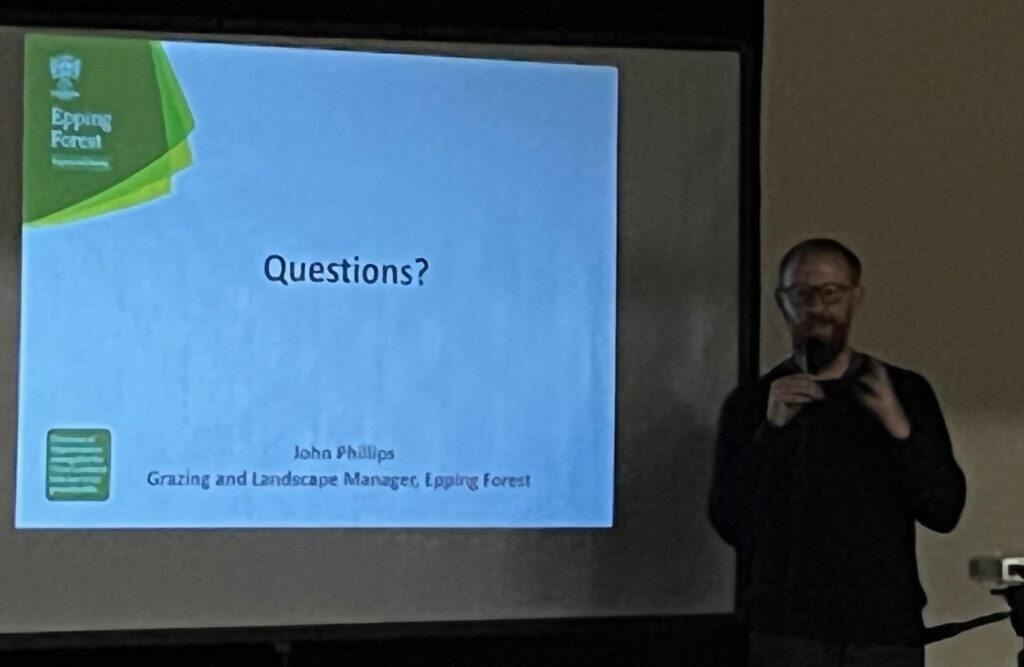


Members of Aldersbrook Horticultural Society were treated to a great talk last Tuesday 8th October, by John Phillips, the Head Conservator of Epping Forest about the cows in Epping Forest and how they are used to improve the landscape of the forest.
Epping Forest covers 3,600 hectares of land and was created by an Act of Parliament in 1878 and is owned by the City of London corporation. After the Forest was taken over by the corporation the ancient custom of pollarding tees was stopped which meant grassland did not grow as it had previously, reducing biodiversity and the space for cattle to graze. Until the middle of the 20th Century cattle grazed in all parts of the Forest, indeed many who were at Tuesday’s meeting can remember cattle walking through the roads of Aldersbrook between the Flats and the Park. Cattle were taken away from the Forest in 1996 as a result of the outbreak of BSE. From 1998 to 2002 cattle were brought back to the Forest, the Longhorn breed were chosen for their docility, with the aim of conservation of the grassland and to increase biodiversity.
Cattle are grazed in Epping Forest to conserve some of the ancient acid grassland, protect the grassland habitats and encourage a wider range of insects, such as dung beetles, to live in the Forest. John talked to us about the Forest’s farm at Theydon Bois where the cows are in calf are kept under cover for about three months.
He explained that it is now possible to have cattle grazing in Wanstead Park as a device the cows wear around their necks acts as an ‘electric fence’ as well as tracking where they are and even how many steps they have done!! The cows currently in the park are called Nina, Olive, Answer and Mara and they will be there until early next year.
There were many questions to John at the end of his talk including how they get their names (from members of the public), what happens to the males in the herd (they get sold to a breeder in Derbyshire); some beef from older cows is sold for ready meals to a well known supermarket, while beef from younger cattle is sold locally.
The talk was very well received and gave a fascinating insight into an important aspect of local life.
